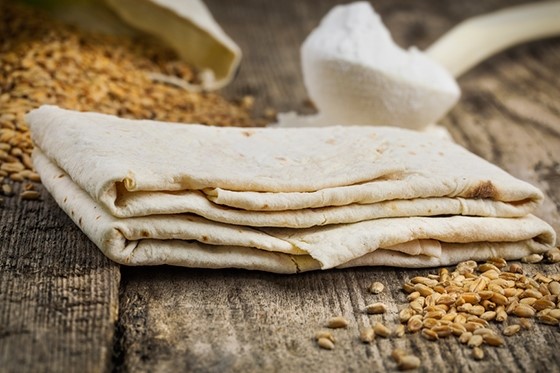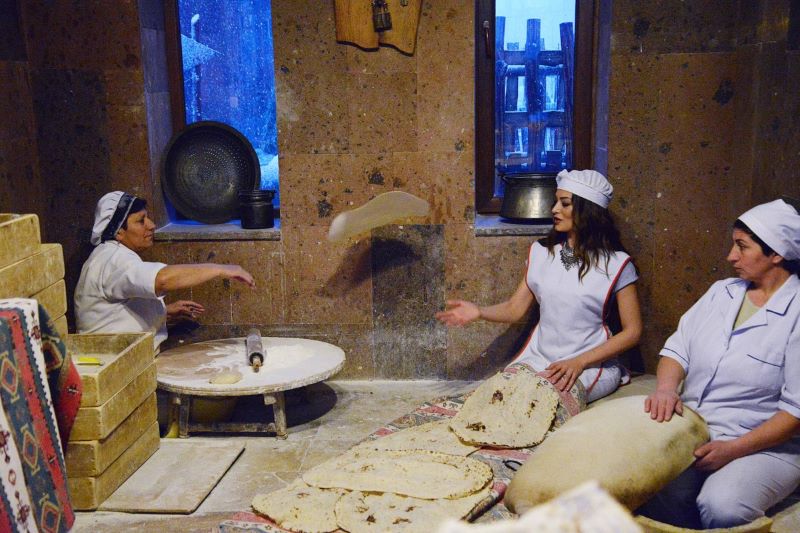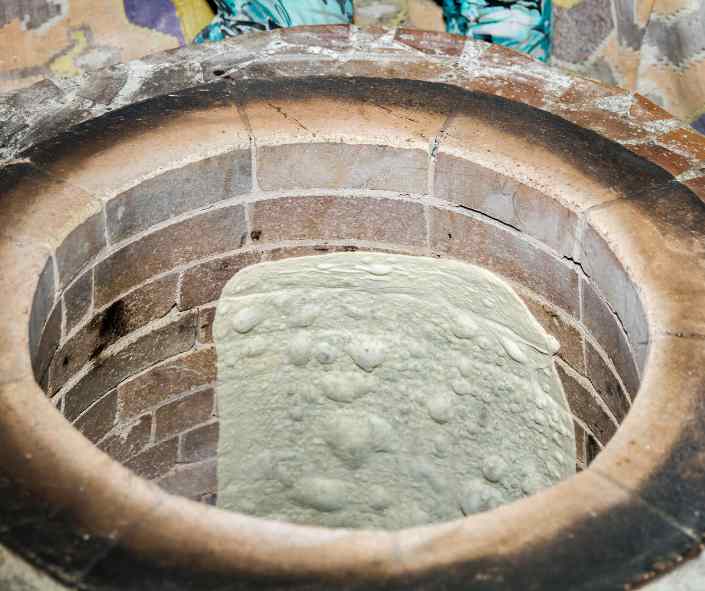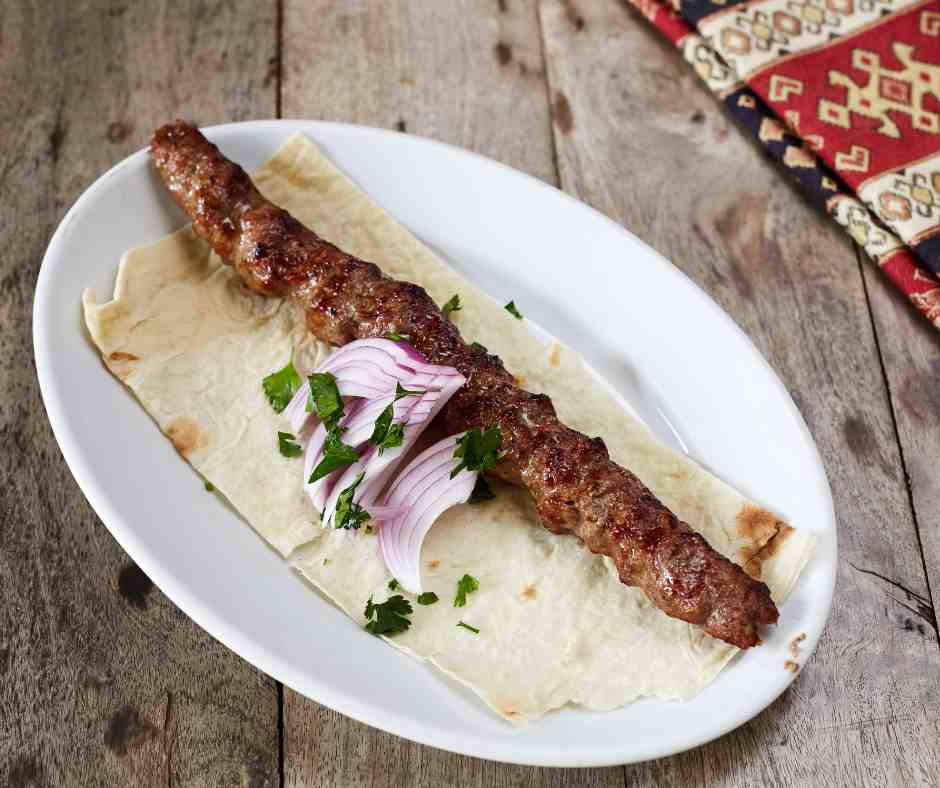
Armenian lavash has been recently listed by CNN among the world’s best breads. Isn’t it a good occasion to speak about lavash and its unique taste?
How many types of bread are there in the world? It’s hard to count. When searching online one can see some 100 or 200 types, other resources point to thousands. One thing is clear bread plays a crucial role in people’s lives regardless of the nation and the country they are living in. Moreover, it has a significant impact on the culture and vice versa.
It’s even hard to define what bread is. In our region they usually call bread is made of water and wheat. However, depending on the country it can be made of rye or corn or have many other ingredients but still be defined by locals as bread.
Lavash is an inseparable part of any tour to Armenia be it a classical tour or a gastro journey. This blog will focus on the history of traditional Armenian bread and its influence on the eating culture of Armenians.
History of Armenian Bread Making
The history of breadmaking in this part of the world spans millennia. The recent discovery by a joint team of Polish and Armenian archaeologists proves this statement. During the excavations at the Metsamor site, an ancient city dating back to 4,000 BC, the group found a structure that they believe once was a bakery. Amid the remnants of the structure, the researchers spotted white dust. According to the group, this is one of the oldest bakeries found in this region.
There are several versions of the etymology of the word “lavash”. However, lavash is often referred to as Armenian flatbread. For example, the American Heritage Dictionary of the English Language defines it as “a thin unleavened flatbread of Armenian origin”.
Lavash Baking

Baking of Armenian lavash was not simply a bread-making process but rather a cherished ritual that had its own rules. The process usually begins early in the morning, as fires are kindled in tonir, a traditional underground oven.
Baking lavash was exclusively a female activity, with each woman playing a specific role in the process. From dough preparation to rolling and baking, the expertise of experienced women guided the less skilled, fostering a sense of community and passing down traditions.
Moreover, lavash was prepared in large quantities to be used for a long period of time. Beyond eating it right after it is made, lavash can be made in advance, which is particularly useful in regions with harsh winters, where it can be stored for months. To restore the softness and flavor of such bread, it is enough to splash it with water and wrap it in a towel for 20-30 minutes.
The process involved several stages from grinding wheat to sorting the finished product.
Made from a non-yeast dough, a piece of dough from a previous baking is usually added. The finished dough is rolled out with a rolling pin on a traditional low round or quadrangular table into a thin layer. The thinly rolled dough is then stretched over a special “pillow” and stuck onto the heated inner walls of the tonir. In 30-35 seconds, the baked bread is pulled out with a special iron rod with a sharp bent end.
Tonir

This traditional underground oven is used for baking bread, both lavash and loaves, as well as for cooking food. In the past, it was an important part of the house as it was used as a heater.
Early samples of tonir were found in Lchashen Bronze Age tombs, Artashat, Dvin, and other ancient sites. The most common type has a diameter of 40-60 centimeters with a depth of 1.2-1.5 meters. In the past, it used to be in the center of the main room in the house or sometimes. It could also be in a separate structure like a bakery where the smoke escaped through a hole in the ceiling. Moreover, in ancient times it was a symbol of the sun.
How Do Armenians Eat Lavash?

Armenians are famous as bread eaters. Tourists are surprised to see that locals eat bread even with pasta. Armenians always have lavash or other types of bread as an addition to any dish. By the way, lavash is always on the table regardless of the time of the day.
You can wrap everything you want in lavash. For example, Armenians wrap chees and greens for breakfast. Of course, one can wrap any meat or sausages, too. In addition, locals crumble dry lavash into soup and broth. Meat and vegetable dishes are often served on lavash and even carried wrapped in it. After making the barbecue the meat is traditionally served on lavash. Try it when traveling to Armenia as this, for sure, would be the most delicious thing that you have ever eaten in your life.
In general, Armenians describe their meals as “eating bread” which shows how important the bread is here. Lavash is the main part of the Armenian diet. The words “to eat” or “to dine” are replaced by “to eat bread” (hac utel) in the Armenian language.
Traditions
There are many traditions associated with Armenian lavash that determine locals’ attitudes towards this bread. For example, instead of cutting bread with a knife, Armenians broke it by hand to preserve its symbolic prosperity, as it was believed cutting it could bring misfortune.
Before eating, elders would touch bread on their foreheads as a sign of respect. Dropping bread was considered a sin, as it could attract evil spirits.
The bread had its place in Armenian rites, such as matchmaking ceremonies, where tearing a pita leaf sealed the agreement. During the weddings, a mother-in-law puts lavash on the shoulders of the newlyweds after the ceremony to protect them from evil. By the way, this tradition has been preserved to this day and is a part of any traditional Armenian wedding.
